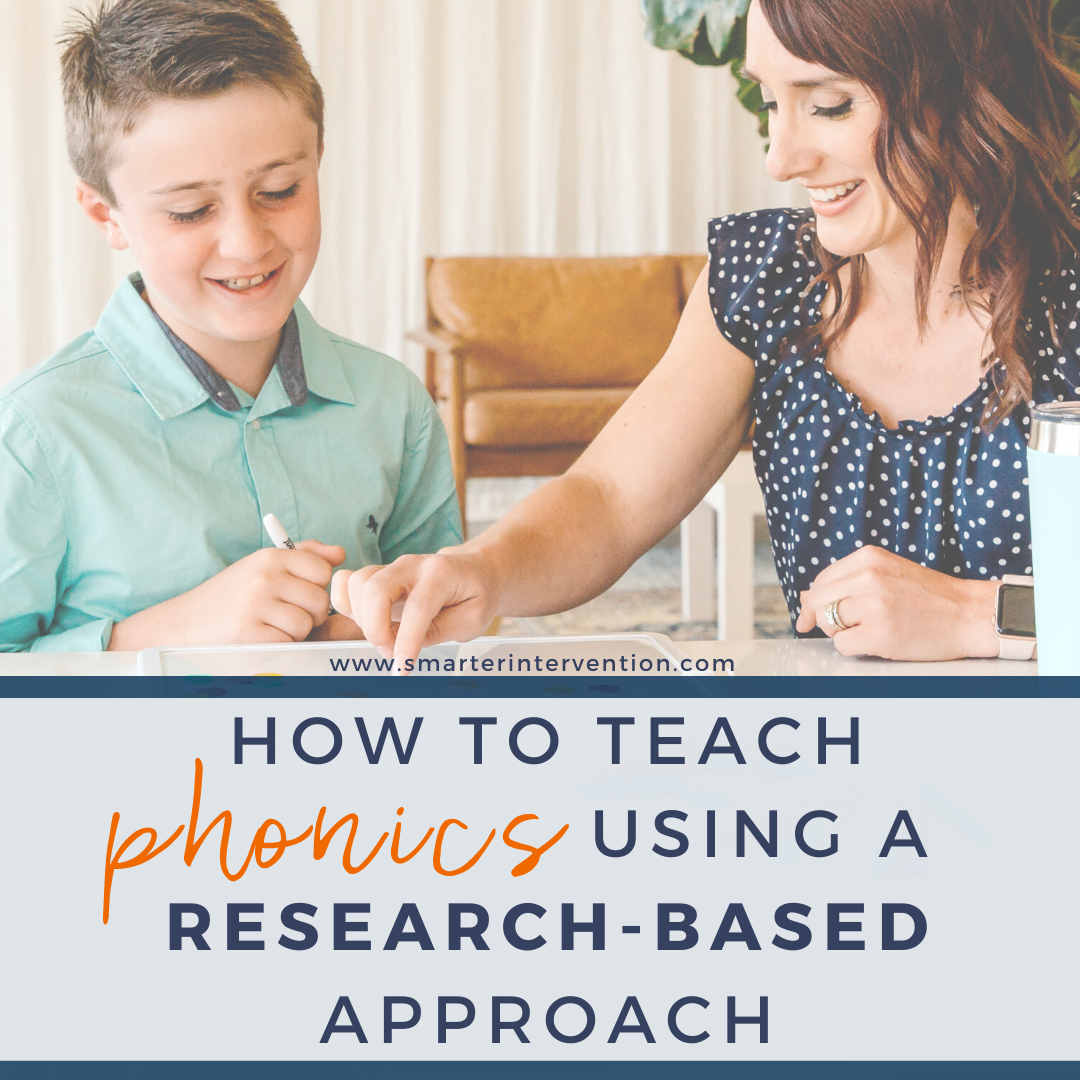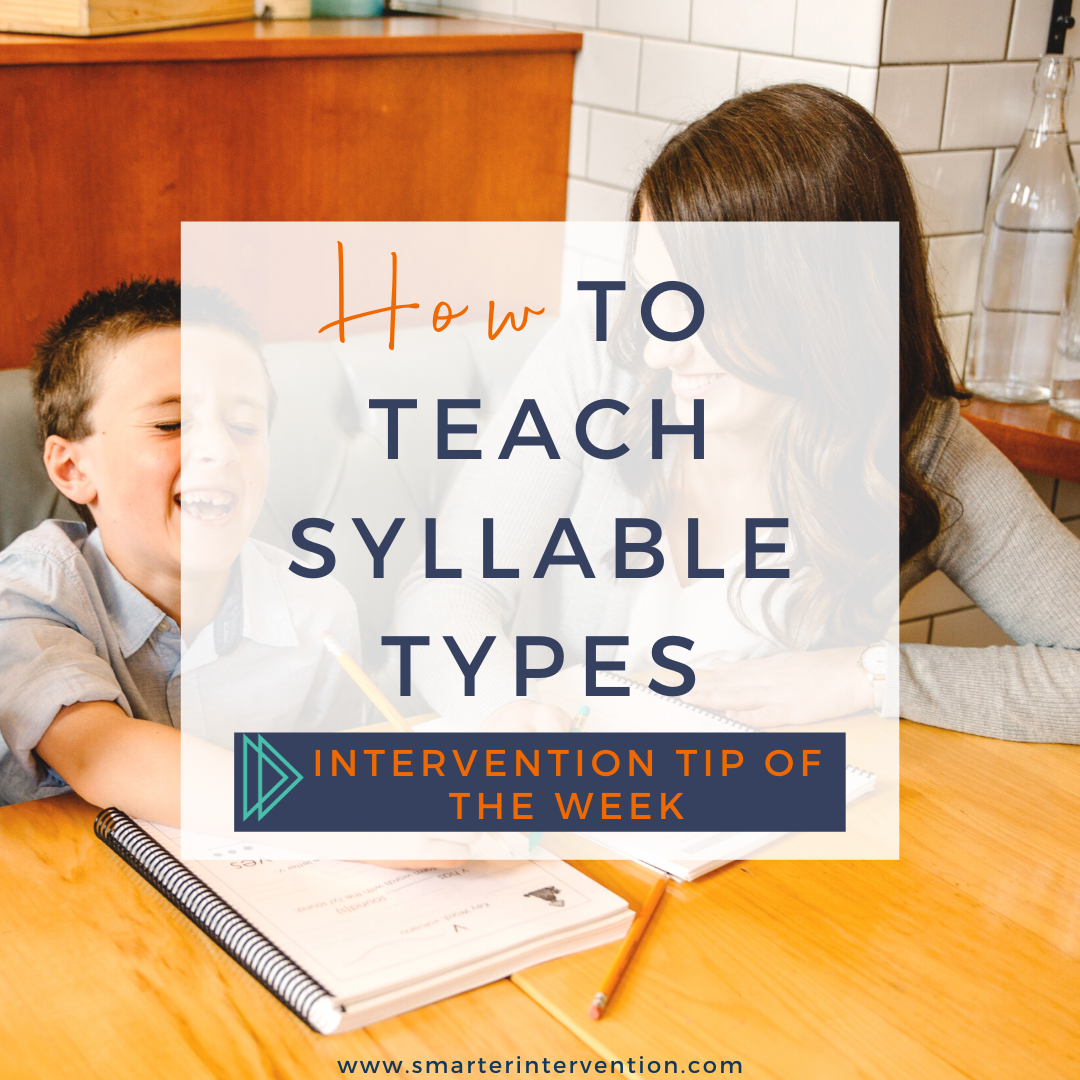Science-based literacy resources and articles
for families, educators and schools
Search by Category:
Categories
- Advocacy
- Authentic Literature
- Business
- Comprehension
- Data Tracking
- Differentiation
- Dyslexia
- Evaluation and Assessment
- Executive Functioning
- Games & Activities
- Helping My Child At Home
- How To
- IEP/504 Plan
- Lesson Planning
- Math
- Online Intervention
- Organization
- Parents
- Phonics
- Phonological Awareness
- Reading Comprehension
- Reading Fluency
- Research
- SLP
- Spelling
- Vocabulary
- Writing
What Should My Phonics Instruction Look Like?
Have you ever wondered what SOR-aligned phonics instruction looks like? Click here to keep reading & learn more!
Why Do We Teach the Six Syllable Types?
Have you ever tried to organize something and had NO idea where to start?
Making sense of our phonics patterns used to feel that way! That is until we started to understand the six syllable types. These provide us with an organizational system for our phonics rules and help make reading & spelling infinitely easier for our students. Keep reading to learn more AND to grab our free Syllable Type Anchor Charts.
What is a Sound Drill?
I'm sure we've all been there… in the middle of a lesson and our student says, "but I already know this!"
Can you relate?
As we work through the sound drill, it is important that we understand why this task is important and be able to explain to our students why it is a necessary part of our lesson. Keep reading to learn more!
How to Use SOR to Support Students with Poor Word Recognition
This week, we are taking a look at how we can best support students who struggle with word recognition (or sounding words out for reading & spelling).
Research tells us that between 70-80% of students who are struggling with reading specifically struggle with word recognition. In order for these students to read effectively, it is critical that we are able to teach them how to decode and encode. Keep reading to learn how we support this group of students and grab some of our favorite resources!
How To Explicitly Teach Phonics Rules
It’s no secret that research tells us we need to teach rules explicitly - but what exactly does that mean?
Today, we are going to break down exactly what “teaching rules explicitly” means as well as walk you through how you can use this approach in your lessons!
How to Teach Sight Words using a Research-Based Approach
In reading intervention we hear terms like sight words, red words, high-frequency words, phonetically irregular words, heart words, and so many other variations used every day. Today, we are jumping in to explain what these words actually are, and what the research says about how we should be teaching them!
How to Teach Phonics using a Research-Based Approach
In the field of reading - phonics is a pretty common term. However, there is much more to phonics & teaching the skills it encompasses than you might think.
Today, we are going to break down what exactly phonics is, and how we ACTUALLY should be teaching these skills to our students. Here’s the thing - there’s a LOT of information out there and it can definitely feel overwhelming if you are trying to pull all of this together alone. The good news though? It doesn’t have to be hard! Our goal is to give you a clear framework you can use to implement research-based instruction!
How to Teach Syllable Division - Intervention Tip of the Week
Today we wanted to share our intervention tip of the week! How to teach syllable division to support decoding skills.
We have a great resource you can use to learn WHY we should teach syllable division patterns!
And today we wanted to walk you through our process and give you some thoughts on why we use the “spot and dot” strategy…
How to Teach Syllable Types - Intervention Tip of the Week
When working with struggling readers, we find it critical to make sure that we are providing frameworks or memory supports wherever possible. Whenever we can lump concepts into bigger picture concepts it really helps our students out! One amazing place to do this is by teaching the six syllable types. We have TONS of information on the six syllable types in our blog post here >>What’s This About Six Syllable Types<<
The great thing about teaching syllable types is that we can lump phonics patterns into their syllable types to provide bigger picture buckets for students.
5 Core Components of Reading - Phonics
Many educators in the field have a love hate relationship with phonics. In the sense that some educators love a phonics approach one week and hate it the next (it can be extremely difficult to organize it all for Pete’s sake). And…some educators LOVE a phonics-based approach and others hate it in favor of a more whole-language approach.
Teaching Blends & Digraphs
Mastering English reading and spelling involves understanding blends and digraphs. Explore our comprehensive guide to teaching these crucial patterns effectively. From phonological awareness to real-world application, we provide strategies and resources for seamless learning.
How to Support Early Reading Skill Development
Teaching early reading skills relies on working from the most basic skills and activities that students need to learn to be successful in the classroom and building a slow and steady progression of sounds. We recognize that teaching letter sounds and beginning blending is truly only one aspect to learning to read but it’s absolutely critical.
How to Teach Syllable Types & Syllable Division
One of the most effective ways to teach reading and spelling skills is to teach students about the Six Syllable Types and how to divide words into syllables using syllable division strategies. When we teach reading, we teach our students that sounds (consonant sounds and vowel sounds) come together to create syllables, syllables come together to create words, words come together to create phrases and sentences, and sentences come together to create paragraphs, which come together to create stories or information text.
How to Teach the au/aw Spelling Rule
Now, if you have been working with us for a while, you’ll know that we LOVE teaching with key images and phrases to help anchor skills for a student. For au/aw, we use the phrase “Yawn, I have to do the laundry.” This helps our struggling readers and spellers remember the rule. Keep reading for more tips, tricks and activities surrounding the au/aw vowel team.
How to Teach the OW Spelling Rule
We use the key phrase “Snow Plow” to teach this phonogram because “ow” has two sounds - /O/ like in snow, and /ow/ like in plow. Read on for teaching tips, tricks and activities!
How to Teach the OU Spelling Rule
OU has two sounds. To help our students remember these sounds, we use the key phrase “Trout Soup” because it can say /ow/ like in trout and /oo/ like in soup. The visual of fish soup is one the students don’t forget very easily! Keep reading for more tips, tricks and vowel team activities!
How to Teach the OO Spelling Rule
OO can be a tricky vowel team because it has two sounds. Click through to read about our tips & tricks for teaching this vowel team!
How to Teach the oi/oy Spelling Rule
We use both “oi” and “oy” to make the /oi/ sound (think of the words “boy” and “foil”). When that sound comes in the middle of a word, we use “oi.” If it comes at the end of the word, we will use “oy.” Keep reading to learn more about how we teach our students all about this vowel team!



















